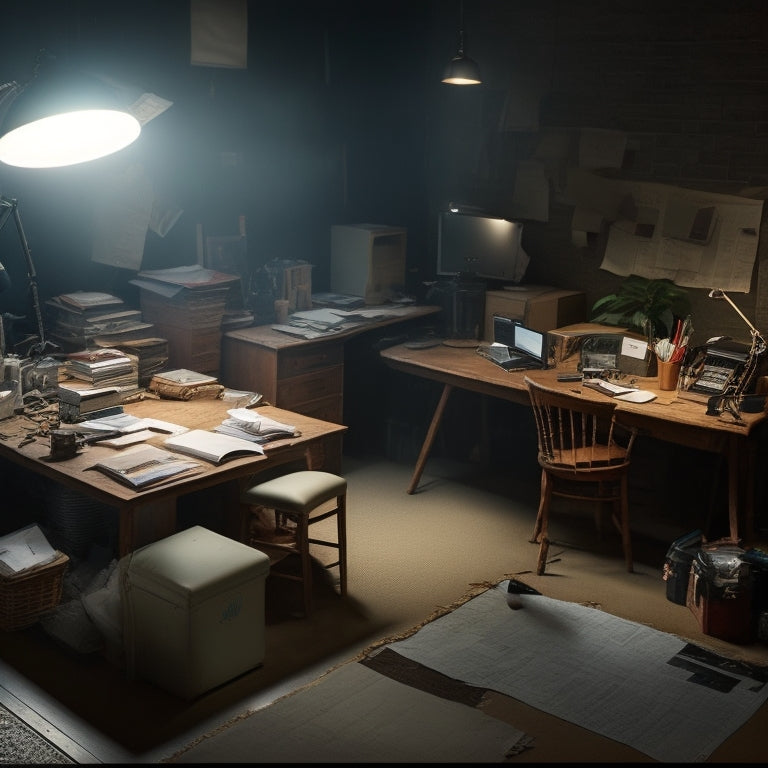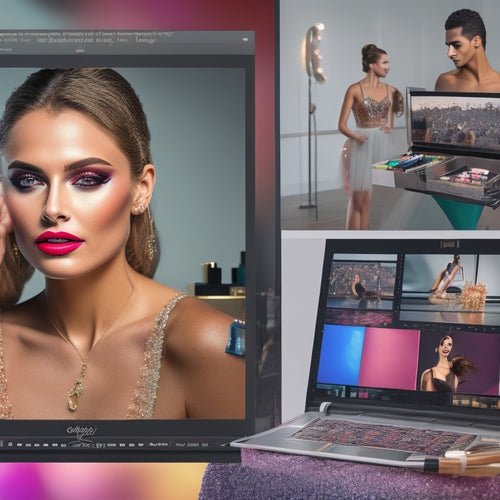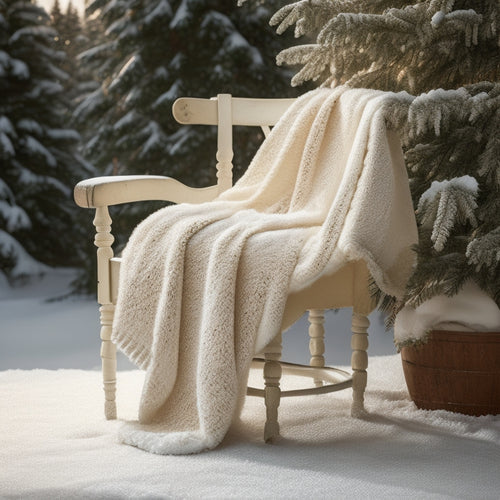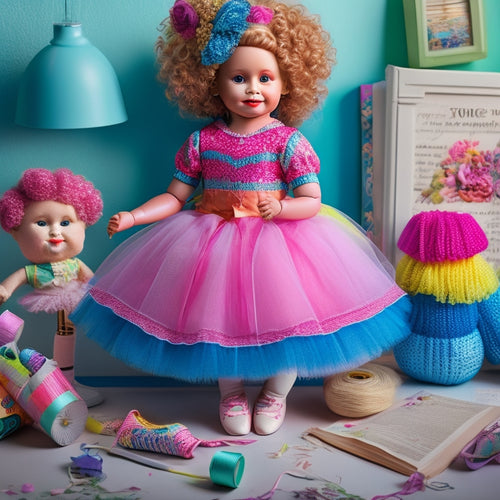
What Tools Do Dance Performance Producers Need?
Share
As a dance performance producer, you need a range of tools to pull off a flawless show. For production planning, utilize time blocking and scheduling software to allocate time for rehearsals, costume fittings, and technical rehearsals. For financial management, rely on spreadsheets, expense tracking software, and budgeting apps to track expenses and income. Effective communication strategies, such as team huddles and daily briefs, keep your team on the same page. From venue coordination to lighting and sound optimization, prop management, and show day operations, the right tools can make all the difference. As you prepare to bring your vision to life, take the next step to discover the details that will elevate your production.
Key Takeaways
• Dance performance producers need production planning tools like time blocking and pivotal path identification to ensure a smooth show.
• Financial management tools, including spreadsheets, expense tracking software, and budgeting apps, help track expenses and stay within budget.
• Effective communication strategies, such as Team Huddles and Daily Briefs, ensure everyone is on the same page and working towards the same goal.
• Lighting and sound optimization tools, including Beam Angles Calculators and DMX512 Lighting Consoles, enhance the overall performance quality.
• Organizational tools, such as automated costume tracking and prop organization systems, help streamline production processes and reduce errors.
Scheduling and Timeline Management
As a dance performance producer, you'll need to master the art of scheduling and timeline management, carefully orchestrating a complex dance of rehearsals, tech cues, and performances to guarantee a seamless show.
To achieve this, you'll rely on time blocking, a technique that involves dedicating specific time slots to specific tasks. By allocating specific times for rehearsals, costume fittings, and technical rehearsals, you'll make certain that every aspect of the production is meticulously planned and executed.
Identifying the pivotal path is also essential in scheduling and timeline management. This involves pinpointing the most vital tasks that will have the greatest impact on the overall production timeline. By focusing on these key tasks, you'll be able to navigate any potential roadblocks and make sure that the show stays on track.
With a clear schedule and timeline in place, you'll be able to breathe a sigh of relief, knowing that every detail has been carefully considered, and the show will be a resounding success.
Budgeting and Cost Tracking Tools
You'll need to wield a sharp pencil and a keen eye for detail to master the high-stakes game of budgeting and cost tracking, where every misstep can send your production careening off the financial rails. As a dance performance producer, you'll need to keep a hawk's eye on expenses, forecast costs, and conduct financial analysis to guarantee your show stays on track.
To help you stay on top of your budget, consider using tools like:
| Tool | Function | Benefits |
|---|---|---|
| Spreadsheets (e.g., Google Sheets) | Track expenses, create budgets, and perform financial analysis | Easy collaboration, real-time updates, and automatic calculations |
| Expense tracking software (e.g., Expensify) | Record and categorize expenses, generate reports | Streamlined expense reporting, automated approval processes |
| Budgeting apps (e.g., Mint) | Track income and expenses, set financial goals | Personalized budgeting, bill tracking, and financial alerts |
| Financial analysis software (e.g., QuickBooks) | Analyze financial data, generate reports, and forecast expenses | In-depth financial analysis, automated reporting, and customizable dashboards |
| Online invoicing tools (e.g., Wave) | Create and send professional invoices, track payments | Easy invoicing, automated payment reminders, and financial reporting |
Venue and Logistics Management
With your budget in check, it's time to tackle the nuts and bolts of bringing your dance performance to life, starting with securing the perfect venue and coordinating logistics that will make your show shine.
You'll need to find a space that fits your vision, has the right technical capabilities, and can accommodate your audience size. Once you've locked in a venue, it's time to think about the behind-the-scenes details. You'll need to plan the backstage layout, considering factors like dressing rooms, storage, and quick-change areas. A well-thought-out backstage layout will help keep your dancers and crew happy and focused on the performance.
Next, develop a load-in strategy to guarantee a smooth and efficient setup process. This includes coordinating with your technical team, scheduling deliveries, and arranging for parking and storage for your equipment. By nailing down these logistical details, you'll be able to focus on the creative aspects of your performance, knowing that the practicalities are taken care of.
Dancer and Crew Communication
Clear communication is the backbone of a successful dance performance, and establishing open lines of dialogue with your dancers and crew is vital to make sure everyone is on the same page.
You can't assume that everyone is on the same wavelength, especially when working with a large team. To avoid miscommunication, schedule regular Team Huddles to discuss any concerns, questions, or updates. This is your chance to clarify any doubts and guarantee everyone is working towards the same goal.
Additionally, consider implementing Daily Briefs, which provide a concise overview of the day's schedule, rehearsal plans, and any important reminders. This keeps everyone informed and focused on the task at hand.
Rehearsal and Run-through Planning
As you explore the nitty-gritty of rehearsal and run-through planning, it's important to establish a structured schedule that allocates sufficient time for each segment, enabling your dancers and crew to refine their skills and perfect the performance. This is where effective Rehearsal Strategies come into play. You'll want to prioritize your most complex or challenging pieces, allocating extra time for mastering tricky choreography or perfecting intricate sequences. By doing so, you'll guarantee a seamless performance that impresses your audience.
As you dig deeper into the rehearsal process, Run Through Analysis becomes essential. This involves breaking down the performance into manageable chunks, analyzing each segment, and making adjustments as needed. By doing so, you'll identify areas that require fine-tuning, allowing you to make targeted adjustments that elevate the overall production.
Music and Sound Design Management
As you take on the essential task of music and sound design management, you'll quickly realize that keeping your audio files in check is key.
You'll need to develop a system for organizing your files, ensuring that every sound cue and music clip is easily accessible and labeled correctly.
Audio File Organization
You'll be juggling multiple audio files, from original scores to sound effects, so developing a strict audio file organization system is essential to keeping your dance performance production on track.
This system should include clear metadata standards, ensuring that each file is accurately labeled with essential information such as file type, resolution, and usage rights. A consistent file naming convention is also vital, using a format like 'Track01_Master.wav' or 'SoundEffect_CrowdAmbience.mp3'. This will help you quickly identify and locate specific files amidst the chaos of production.
Additionally, create separate folders for different types of files, such as 'Music', 'Sound Effects', and 'Voiceovers', and consider color-coding or tagging files based on their purpose or scene. By implementing these organizational strategies, you'll save time and reduce stress, allowing you to focus on crafting a mesmerizing dance performance.
Sound Cue Timing
With your audio files neatly organized, it's time to turn your attention to the precise timing of your sound cues, ensuring that every note and effect is perfectly synchronized with the dancers' movements. This is where the magic happens, and your show transforms into a harmonious fusion of sound and motion. To achieve this synergy, you'll need to master the art of sound cue timing.
Click tracking is essential in this process, allowing you to pinpoint exact moments in the music or sound effects to trigger specific actions on stage. You'll need to prioritize your cues, deciding which sound elements take precedence over others. Cue prioritization is critical, especially when multiple sounds are competing for attention.
Lighting and Special Effects Tools
Your dance performance relies heavily on lighting and special effects tools to set the mood, create ambiance, and enhance the overall visual experience. As a producer, you need to create an immersive atmosphere that transports your audience to a new world. To achieve this, you'll need the right lighting and special effects tools.
Here are three essential tools to get you started:
-
Light Plot Software: This software helps you design and visualize your lighting setup, ensuring your light plot is perfect for your performance.
-
Beam Angles Calculator: This tool calculates the ideal beam angles for your lighting fixtures, ensuring they're focused exactly where you want them.
-
DMX512 Lighting Console: This console allows you to control and program your lighting cues, creating a seamless and professional lighting experience.
Costume and Prop Management Software
As a dance performance producer, you know how important it's to keep track of every detail, including costumes and props. That's where costume and prop management software comes in, helping you streamline your process with tools like prop organization systems and automated costume tracking.
Prop Organization Systems
You depend on efficient prop organization systems to keep your production's countless costumes, accessories, and set pieces in check, guaranteeing that every item is accounted for and ready when needed. A well-organized system saves you time, reduces stress, and prevents last-minute scrambles. To achieve this, you need a solid labeling strategy and inventory method in place.
Here are three essential components of a prop organization system:
-
Barcode scanning: Assign a unique barcode to each item, making it easy to track and locate props in your inventory.
-
Categorization: Organize props by type, scene, or character to ensure quick access and minimize confusion.
-
Digital inventory management: Use software to track prop movement, storage, and maintenance, giving you a clear overview of your inventory at all times.
Automated Costume Tracking
Efficient costume tracking software serves as the backbone of a well-oiled production, streamlining processes and providing real-time visibility into your costume and prop inventory. With automated tracking, you'll never have to worry about misplaced or lost items again. You'll be able to quickly locate specific costumes, accessories, or props, saving you valuable time and reducing stress.
This software also enables you to optimize your inventory, ensuring you have the right items in the right quantities. Conduct regular garment inspections to identify worn-out or damaged items, and make informed decisions about repairs, replacements, or new purchases.
You'll be able to track maintenance and cleaning schedules, ensuring your costumes are always in top condition.
Show Day Operations Management
On show day, your meticulous planning and attention to detail take center stage as you oversee a seamless execution of logistics, ensuring every aspect of the performance runs smoothly and according to schedule. As the producer, you're responsible for managing the behind-the-scenes chaos, and it's vital to stay organized and focused.
To guarantee a successful show, you'll need to:
-
Assign crew members to specific tasks, such as setting up lights, sound, and stage equipment, to facilitate a smooth setup and shift between acts.
-
Create a backstage layout that accommodates the dancers, crew, and equipment, minimizing congestion and ensuring easy access to the stage.
-
Coordinate with your team to make sure that all technical aspects, such as lighting and sound cues, are executed flawlessly during the performance.
Frequently Asked Questions
How Do I Handle Last-Minute Dancer Injuries or Absences?
When a dancer drops out last-minute, you'll breathe easier if you've developed contingency planning and emergency protocols, allowing you to swiftly adapt the choreography, reassign roles, and keep the show on track.
Can I Use Project Management Tools for Dance Productions?
You can totally use project management tools for dance productions! They'll help you delegate tasks, visualize timelines, and stay on top of every detail, ensuring your show goes off without a hitch.
What Are the Essential Documents for a Dance Performance?
"When you're 'burning the midnight oil' preparing for your dance performance, don't forget the essentials: a detailed Rehearsal Schedule to keep everyone on track, and Contract Riders outlining technical and logistical requirements to avoid last-minute hiccups."
How Do I Ensure Consistent Lighting and Sound Cues?
You guarantee consistent lighting and sound cues by creating a detailed Cue Script, referencing your Lighting Plots, and rehearsing with your team to perfect the timing and execution of each cue.
Are There Any Free or Low-Cost Tools for Dance Producers?
"Imagine a treasure chest overflowing with freebies! You'll find Cloud Storage gems like Google Drive and Microsoft OneDrive, and budget-friendly Budget Templates on Canva and Google Sheets, saving you time and cash, darling!"
Related Posts
-

Learn Dance Makeup Artistry Online: A Step-by-Step Guide
You're about to begin an exciting journey to master the art of dance makeup online! First, you'll need to select the ...
-

Winter Dance Blanket: Perfect Super Bulky Knit
The Winter Dance Blanket is a delightful super bulky knit pattern designed for effortless creation, featuring a simpl...
-

Exciting 'Dancer Doll' Sewing Pattern Released
The Dancer Doll sewing pattern is now available, offering a detailed guide to crafting a beautifully detailed doll. T...


